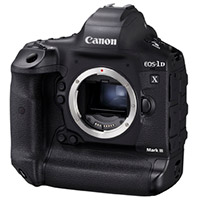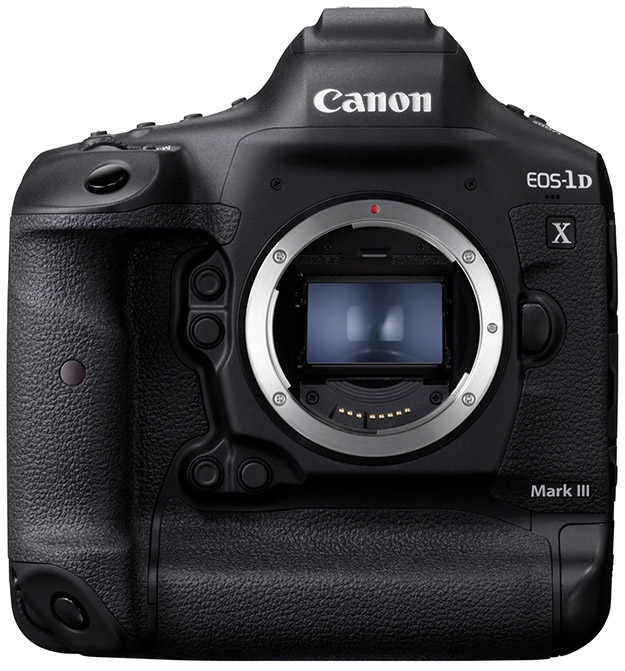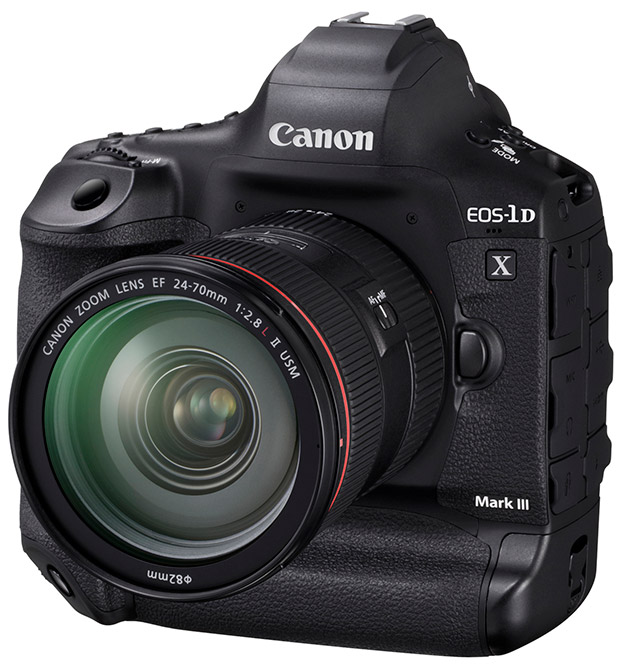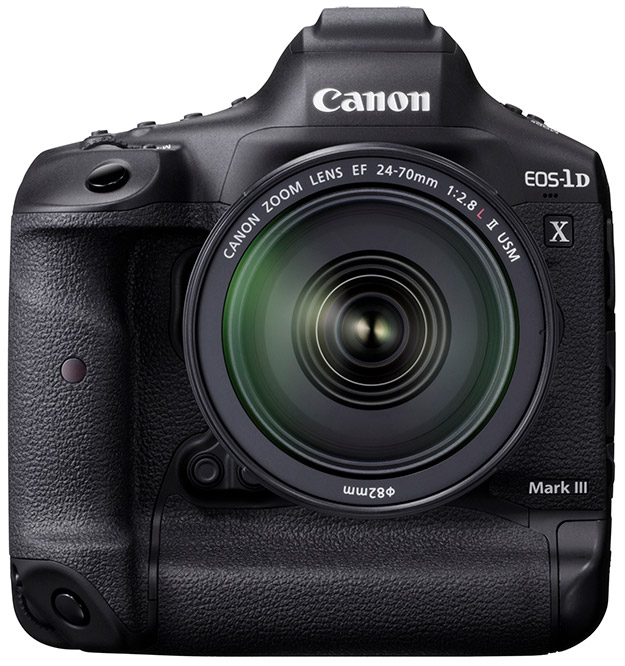Canon announces the faster, more powerful 1D X Mark III flagship DSLR (UPDATED)
posted Thursday, October 24, 2019 at 9:06 AM EST
UPDATE, Jan. 08, 2020: Canon has officially announced the 1D X Mark III, and we've now published our detailed First Impressions Preview.
Click here to read our Canon EOS 1D X Mark III Preview.
• • •

Surprise, surprise, Canon fans! The latest flagship EOS DSLR is on its way. Given the earlier announcements of both Nikon's upcoming flagship DSLR, the Nikon D6, and Sony's debut of their latest high-speed, pro-oriented A9 Mark II, it's not all that shocking to see Canon following suit with their development announcement of the EOS 1D X Mark III.
On the other hand, it's also about time a new 1D-series camera made its way into the real world. The original 1D X debuted all the way back in 2012, just in time for the 2012 London Olympics, and then the 1D X Mark II showed up in 2016 -- again, an Olympics year. Now, as we head into 2020, with the Tokyo Olympic Games on the horizon, the latest and greatest Canon EOS DSLR is set to make its debut.
As with most camera "development announcements," full specs and details on the upcoming camera are not yet available, but Canon earlier today put out a press release outlining some of the camera improvements and new features. As expected, the forthcoming 1D X Mark III is designed with professional sports and wildlife photographers, in particular, featuring Canon's top-of-the-line tech when it comes to speed, precision and build quality. According to the Canon, the new 1DX III will bring an improved AF system, new stills and video recording options, and faster communication and data-transferring specs, with both wired and wireless connectivity.

The exact specs of the new sensor and new image processor have not been announced, including the megapixel count, but the 1D X Mark III will be powered by an all-new Canon-developed CMOS imaging sensor and the latest DIGIC processor. According to Canon's development announcement, the camera will offer even higher ISO levels -- which is quite impressive given that the predecessor could reach up to ISO 409,600. Additionally, the camera will be capable of capturing stills using a 10-bit HEIF (High-Efficiency Image File) format, which should offer improved dynamic range and better color reproduction over the usual JPEG files, according to Canon. Smartphone users might also recognize the HEIF image format, as that's the default image file format for Apple's iPhones starting with iOS 11, with the goal of providing a more space-saving image and video format that the typical JPEG and H.264 videos. With the Canon 1D X III, this will be the first time a standalone digital camera will shoot stills using the HEIF format.
RAW capture will also be available, too, but cameras such as the 1D-series are often used in sporting event coverage and other photojournalistic uses where speed and smaller, easier-to-transmit image files are preferred or required. Implementing a space-saving yet higher-quality alternative file format to JPEG is an exciting addition.
On the video side of things, the Canon 1D X III will also shoot 4K video up to 60fps with 10-bit 4:2:2 Canon Log internal recording. The previous 1D X II could shoot in 4Kp60, but no previous 1D-series camera (outside of the specialized, cinema-oriented 1D C) offers Canon Log recording, internally or otherwise. (The Canon 5D Mark IV, however, has an optional, paid firmware update to add C-LOG functionality.)

When it comes to speeds, the new Canon 1D X III is said to offer an updated AF sensor and new AF algorithm that incorporates Deep Learning Technology, which should provide faster, more precise focusing and better subject tracking capabilities, when using both the optical viewfinder and in Live View shooting. The dedicated AF sensor is said to offer about 28 times the resolution in the center compared to the predecessor. With Live View shooting, the new imaging sensor supports Dual Pixel CMOS AF and uses 525 AF points that cover "90x100 percent" of the imaging sensor area.
Burst speeds, too, are faster than the previous model, with up to 16fps using the mechanical shutter (1DX II was 14fps), and 20fps with Live View (16fps in the previous camera). In terms of media storage, gone is the rather odd mixture of one CompactFlash slot and one CFast 2.0 slot, with the 1D X III providing two, super-fast CFexpress card slots that Canon claims will provide five times the RAW burst depth compared to the previous 1D X II.
Design-wise, the 1D X III will look more or less similar to the predecessor, according to the press release and the few product images releases thus far. The camera will provide familiar and comfortable ergonomics and design for those used to the Canon 1D-series, as well as offering its characteristic durability and ruggedness. The magnesium-alloy body is said to offer the same reliability and durability as the previous model. There have been some subtle improvements to the design, including illuminated buttons and a new control option for selecting AF points. A new control built into the AF-ON button allows users to change the AF point on the fly. Also, while the camera uses the same LP-E19 battery pack, Canon has stated the camera will have improved battery performance, which is quite impressive given the already-spectacular battery life of the 1D X II.

Lastly, the 1D X III features built-in Wi-Fi and Bluetooth Low-Energy connectivity as well as GPS functionality. Additionally, there is a built-in ethernet port, which will offer twice the data transfer speed than the 1D X II. There is also faster wireless transfer speeds when paired with the new WFT-E9 wireless file transmitter accessory.
Pricing, availability and other specs for the upcoming Canon 1D X Mark III have not yet been released. Given the history and popularity of the previous 1D-series cameras, the upcoming 1D X III will likely not hit the most affordable price point. However, for the professionals out there who demand the absolute best-of-the-best for speed, precision and performance, the 1D X III looks to be an absolute beast of a camera.
